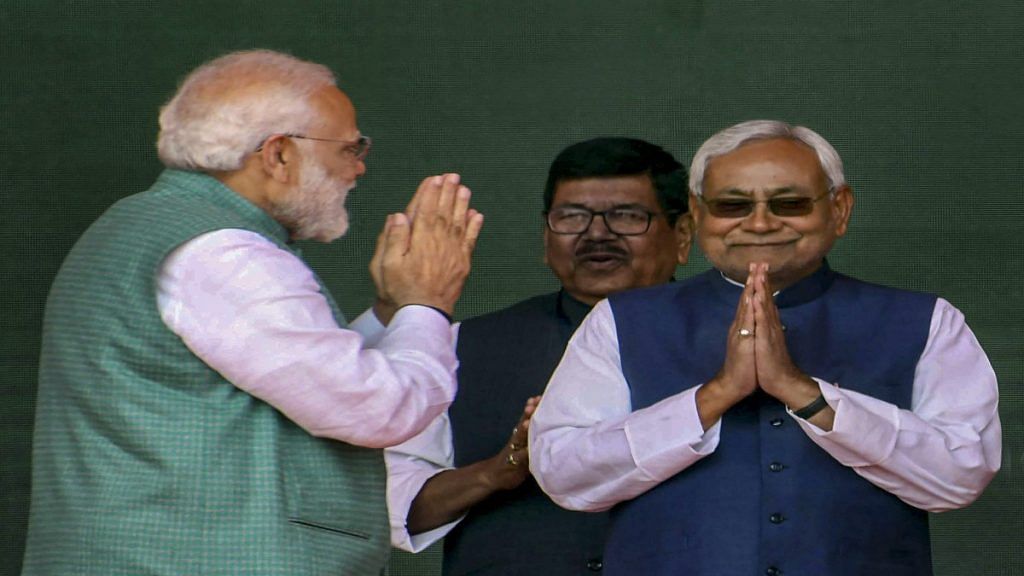Deaths of more than 120 children in Bihar from Acute Encephalitis Syndrome should be a matter of shame for a nearly $3 trillion economy. The outbreak of Chamki Bukhar, as the disease is known in Bihar, is yet another incident exposing India’s poor healthcare system to the world.
But the outbreak in Bihar’s Muzaffarpur district has also laid bare the limitations of the Narendra Modi government’s pet project – the Ayushman Bharat Yojana. Hailed as the world’s ‘largest publicly funded health insurance scheme’, Ayushman Bharat promises to provide financial coverage for secondary and tertiary care to poor patients in private hospitals.
However, with the number of children dying from Acute Encephalitis Syndrome (AES) rising with each passing day, the focus is back on the capacity of government hospitals to tackle such health emergencies. Contrary to what Modi’s Ayushman Bharat scheme promises, all the patient load in Bihar has fallen on its woefully inadequate government hospitals.
In times of Modicare
Ayushman Bharat Yojana, also popularised as Modicare, was launched by the Modi government in September 2018. The scheme provides for cashless treatment for eligible beneficiaries at empanelled hospitals. The Modi government says its scheme provides a health coverage up to Rs 5 lakh per family per year to around 10.74 crore poor and vulnerable families, or a population of approximately 50 crore.
Also read: Litchis aren’t giving encephalitis to Bihar’s kids, it’s malnourishment
But the catch here is that the ratio of contribution towards the premium/cost of treatment of the beneficiary between the Centre and the state is 60:40. So, at the level of implementation, states with sufficient money in their coffers are better placed to make use of the scheme since they will be able to provide their share of the grant. The Modi government earmarked Rs 6,400 crore in its interim budget (2019-20) for Ayushman Bharat scheme. But only those states that pay the 40 per cent share can avail this fund.
That is where Bihar has missed the bus. Because it does not have the capacity and the infrastructure to absorb and benefit from the scheme.
Bihar’s share in Modicare
Data for the implementation of the Ayushman Bharat scheme until 16 June 2019 is an eye-opener. Against a total of 23.26 lakh claims, Rs 3,077 crore has been disbursed. Gujarat leads the pack by securing Rs 641 crore. Other states with considerable share include Chhattisgarh (Rs 379 crore), Karnataka (Rs 368 crore) and Tamil Nadu (Rs 349 crore).
Also read: Indian TV reporters who were supporting doctors in Bengal are now harassing them in Bihar
Bihar, with the second largest number of below poverty line (BPL) families in the country (after Uttar Pradesh), has been one of the worst performers in terms using the Modi government’s fund for Ayushman Bharat. Under the scheme, the state could raise only 39,943 claims, and the amount disbursed is an abysmal Rs 34.58 crore. Uttar Pradesh with 1.05 lakh claims managed to get Rs 117 crore. Another laggard state is West Bengal, with merely 14,000 claims and Rs 14.14 crore disbursed to it under the scheme.
States like Bihar bound to suffer
The Ayushman Bharat scheme, which claims to provide healthcare to “the poor and vulnerable families based on deprivation”, does not reach the poorest parts of India. Bihar and Uttar Pradesh that top the list of states with most BPL families are also the worst positioned to avail the benefits of Modicare.
First, these states lack a network of good private hospitals where the poor can easily go to avail free tertiary care. As concluded in a research paper, going by the current spatial distribution of the private health sector in India, its growth in response to the Ayushman Bharat-National Health Protection Scheme (AB–NHPS) is likely to be patchy and concentrated in geographical pockets. States like Bihar, Uttar Pradesh and West Bengal have to do a lot of groundwork, and only then can the Ayushman Bharat scheme reach the poor population in these states.
Also read: Encephalitis deaths: Political opportunism trumping governance in Nitish Kumar’s Bihar?
Second, poor states do not have the requisite administrative infrastructure to enrol their underprivileged for the scheme. There are lots of logistical issues involved.
And finally, these states cannot provide for their share of funds (40 per cent of the total expenditure), which keeps them deprived of the money allocated by the Union government. States with concentration of private hospitals, good administrative infrastructure and with deep pockets will be the beneficiaries of Ayushman Bharat scheme.
That is bad news for the poor children of Bihar, who are in dire need of healthcare facilities as well as financial support.
The author is a senior journalist. Views are personal.
